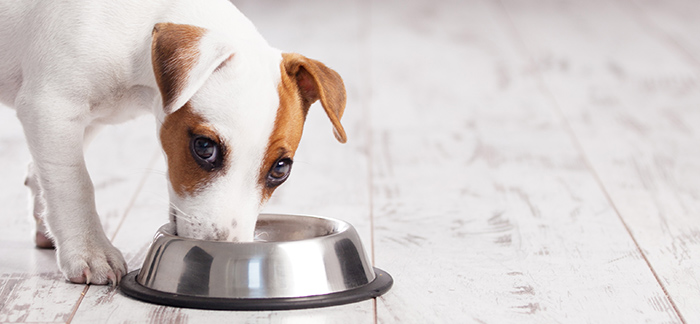
It is, without doubt, the era of special dietary requirements. Much to the dismay of restaurant chefs everywhere, us humans of the new millennium are getting picky about the foods we consume, and rightly so. More than any prior generation, we’re bombarded with highly processed food-like products. Stripped of nutrients, they nonetheless pack a massive punch – a medley of sugar, carbs, preservatives, colourants and flavourants, not to mention pesticide-laden GM crops, and sketchy chemicals.
Heavily processed and sparkly-packaged, our pet foods are starting to come under the spotlight too. They’re part of our families, these fur-babies of ours, and many of us are prepared to pay through the nose for the top of the range, practically diamond-encrusted fare. Natural, organic and specialised (such as raw and even vegan) pet foods carry even heftier price tags.
.jpg)
Is it any wonder that pet lovers the world over are turning tail and embracing the idea of serving their precious pooches home-cooked cuisine instead? It seems a whole lot more appealing to be able to have some say as to what goes into our pets’ food and save a few pennies, right?
Right. But before we start celebrating all our extra pocket money, let’s take a look at the nitty gritty.
Don’t let your vigilance go to the dog
You may be persuaded that commercial pet foods are not the most nutritious, but don’t go the whole hog without careful research, planning and consultation with your veterinarian. It turns out that it’s quite a responsibility to take on the task of balancing your pet’s specific dietary requirements all by yourself.
A few basic
Our canine companions require a meticulously measured mix of protein, fat, carbohydrates, calcium and essential fatty acids. Follow recommended recipes to the T, cook well, and make sure you’re supplementing any missing nutrients (a good dog food recipe will identify these). Be careful not to swap ingredients because each one has a specific nutritional make up that cannot easily be replicated. Stay away from bones, and any food known to be toxic for dog, including chocolate, grapes, avocados, onions, garlic and macadamia nuts, amongst other things.
.jpg)
Our feline friends, meanwhile, as obligate carnivores, need protein, amino acids provided by meat, fatty acids, vitamins, minerals and water. Carbohydrates and grains are actually not required. Deciding between a raw versus cooked meat diet is a complex and controversial decision. Many advise against raw because of the dangers of contamination and spread of disease between pet and human, while others claim it is exactly what nature intended. Some recommend a cooked diet, and still others warn that the entire DIY route is dangerous because it is so important to get the exact quantities right. Whatever your choice, there are a few definite no-nos to keep far away from your cat’s plate including onions and garlic, raw tuna and fish, cow’s milk, raisins and chocolate.
Making your own pet food may save you in the long run, but be ready to invest a heap of time and energy in getting it done right from the start. That means extensive research, using only recipes assessed by a qualified pet nutritionist and carefully monitoring your precious pet’s health over time in conjunction with your vet.
So, fancy yourself a master-pet-chef?
Date Published: 24 February 2017
